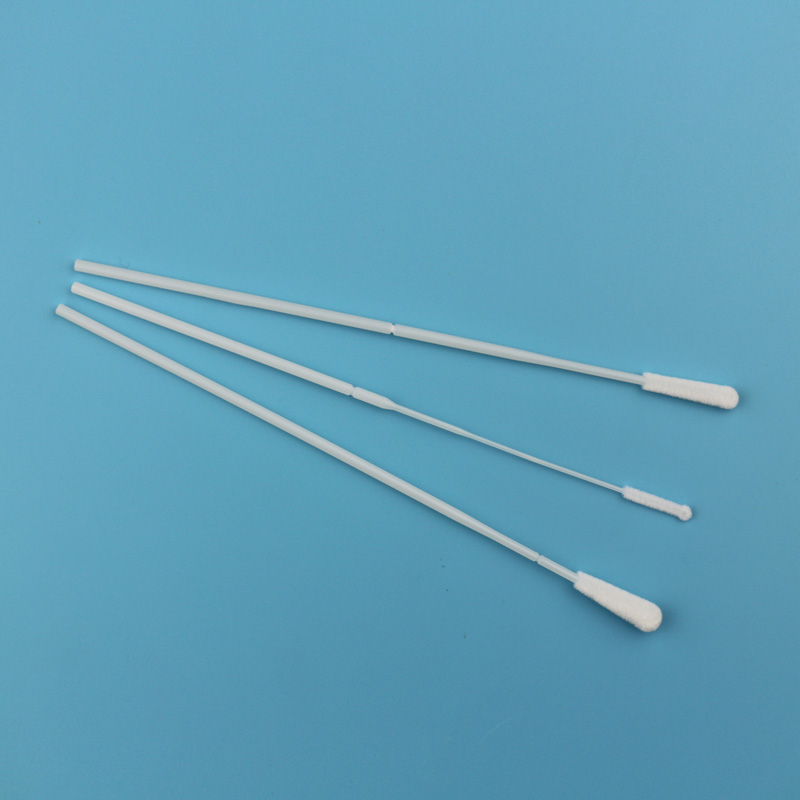Why Use Flocked Sampling Swabs for COVID-19 Nucleic Acid Testing?
2022-02-22

COVID-19 is a variant of the coronavirus that can cause pneumonia in humans. It is an acute respiratory infectious disease, highly contagious, and most people are susceptible. It is easily replicated in the upper respiratory tract of humans. Under normal circumstances, the new crown nucleic acid can be quickly detected within 96 hours after infection. Testers can find the virus in the upper respiratory tract of humans. Experiments show that flocked sampling swabs can quickly elute >95% of the original sample, easily improving detection sensitivity.
Application of flocked sampling swabs
The upper respiratory tract of the human body includes the nasal cavity, pharynx and throat. That is, if a person is infected with COVID-19, he can extract viral nucleic acid from the nasal cavity, pharynx and larynx within 96 hours. Therefore, when we conduct rapid nucleic acid testing for new crowns, we generally sample these locations.
We differentiate swabs by different sampling locations. For nasal sampling we become nasopharyngeal flocked swabs; for oral sampling we become oropharyngeal flocked swabs.
What is the difference between a nasopharyngeal flocked swab and an oropharyngeal flocked swab?
In addition to the different sampling sites, nasopharyngeal swabs and oropharyngeal swabs have different material hardness. Nasopharyngeal swabs are generally slender and soft, and can change shape along the nasal cavity to facilitate the sampling personnel to probe into the upper respiratory tract along the nasal cavity. Oropharyngeal swabs will be thick and hard.
In terms of comfort, there is also a big difference between the two. Due to frequent gas exchange in the nasal cavity, the swab should be fully extended to the end of the nasal cavity during sampling to ensure that a sufficient concentration of sample is collected. This is often very uncomfortable for the subject and sometimes even causes nosebleeds. Oropharyngeal swabs only need to collect pharyngeal samples, which can be collected only by opening the mouth. While it can occasionally cause a temporary feeling of nausea, the discomfort doesn’t last long.
There is also a significant difference in drug loading between the two. Studies have shown that in patients infected with the new coronavirus, the amount of drug carried by nasopharyngeal swabs is significantly higher than that of oropharyngeal swabs. That is to say, the detection volume of nasopharyngeal swabs is generally higher than that of oropharyngeal swabs.
In addition to nasopharyngeal and oropharyngeal swabs, there are also anal swabs. As the name suggests, anal swab is a test performed on patients with gastrointestinal symptoms. It can effectively improve the detection rate, but it is not widely used due to inconvenient sampling.
Precautions
After swab sampling, the swab should be placed in the sampling tube immediately to avoid contamination of the sample. Then, the subsequent nucleic acid detection process was carried out. Regardless of the swab used, the nucleic acid testing process is the same. Complete the rapid COVID-19 nucleic acid test in four separate areas of the laboratory, and obtain the test results.
















